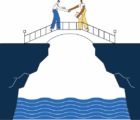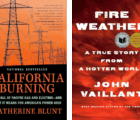 Ten percent of the insured property losses worldwide of the past 30 years have occurred in the most recent three years. One-third of these latest losses were due to tropical cyclones.
Ten percent of the insured property losses worldwide of the past 30 years have occurred in the most recent three years. One-third of these latest losses were due to tropical cyclones.
Numbers like these often are simply chalked up to global warming or climate change.
But attendees at the virtual CAS Spring Meeting were told that warming trends and their resultant “weather weirdness” are just one component in catastrophe loss trends — and not the most significant one. Included in their evidence: a preliminary version of a climate risk index that uses data from the Actuarial Climate Index (ACI), which was created by the four North American actuarial associations.
Losses on the rise
The United States has accounted for about 63% of total insured losses since 1900, Aon Director and Meteorologist Dan Hartung said. Since 1950, global insured losses have increased at an annual rate of about 7% above inflation.
Against the backdrop of this trend, he says, 2017, 2018, and 2019 represent the largest consecutive insured loss years in U.S. history.
“Of that $1.7 trillion of insured loss,” Hartung says, “a third can be attributed to tropical cyclones.” Hartung said it’s common insurance industry knowledge that tropical cyclones — called “hurricanes” when they occur in the Atlantic Ocean and certain parts of the Pacific — tend to drive losses.
The overwhelming consensus in the scientific community is that human-caused climate change has been going on since the Industrial Revolution. Climate change is also widely viewed as a leading contributor to the rise in insured losses. In fact, when actuaries attending the session “Climate Change and Catastrophic Trends” were asked if they believe increasing catastrophe losses are due to climate change, 83% said they do.
In a separate presentation, Richard Gibson, FCAS, MAAA, senior property-casualty Fellow at the American Academy of Actuaries, quantified that “common knowledge” with data from the Actuaries Climate Risk Index (ACRI). This data shows that, from 1961 through 2016, tropical storms accounted for $268 billion in inflation-adjusted losses, followed by convective storms ($169 billion) and flood ($156 billion).
The ACRI is a new index developed by the Academy that seeks to determine whether there is a correlation between climate change and losses from extreme weather. It builds on previous work done in developing the ACI, a tool launched in 2016 to monitor the frequency of extreme weather and sea-level change.
Socioeconomic changes … are the predominant driver of more natural catastrophe loss for all perils.
The ACRI found that “extreme weather-related loss events have been increasing in frequency since 1990,” Gibson said. “Along with higher losses, we’ve also been seeing higher volatility.”
Gibson described the ACRI as “version 1.0” and its results as “preliminary.” An eventual, more robust version is expected to benefit actuaries, policymakers, public and private decision makers, and the general public by helping them better understand the economic impacts of climate change.
Socioeconomic factors dominate
A warming climate leads to more unpredictable weather patterns that can include more tornadoes per outbreak, precipitation per event, cold spells and heavier snows, and more intense droughts and prolonged fire seasons.
“If you perturb the climate system,” Hartung says, “you get more unpredictable changes in weather patterns across different geographies. In other words, more weather weirdness.”
Alongside these changes, Hartung points to shifts in human behaviors that also contribute to growing losses:
- People moving to areas that are more subject to weather-related claims (hurricane- and flood-prone coastal regions and fire-prone mountain locales).
- Larger, more expensive homes with “more stuff” inside them.
Hartung shared a series of charts showing frequency and severity of hurricanes, convective storms, and wildfire that displayed little to no trend — whereas population growth in catastrophe-prone areas was clear in his data visualizations.
Although shifting weather patterns likely play a role, such socioeconomic changes, he concludes, are the predominant driver of more natural catastrophe loss for all perils. The ACRI’s preliminary results support this conclusion.
Gibson also cited a report by the United Nations Intergovernmental Panel on Climate Change: “Economic costs of extreme weather events have increased over the period since 1960 . . . However, the greatest contributor to increased cost is rising exposure associated with population growth and growing value of assets.”
Insurers’ responses
Insurers are getting better at acknowledging the reality of climate change and its impact on business, Hartung says. They are using scenario-based models and insurtech tools as they work to improve their pricing of climate change-related risks. Actuaries are an important part of that conversation, as Gibson illustrated in his discussion of the ACRI.
Another presenter, James Orr, chief actuary, general insurance, for the Prudential Regulatory Authority, part of the Bank of England, discussed the importance of considering climate-related trends in actuarial work.
“It may be tempting to assume that slow, gradual changes in the climate will be experienced and only small differences in premiums will be needed to reflect these changes,” he said. “However, acute physical risks include the frequency of large Cat events, where trends are difficult to identify.”
In addition to pricing, Orr discussed reserving considerations: “What existing chronic or acute weather- and climate-related drivers of insurance claims might be affected by climate change? How will adaptations affect the risks?”
Orr also looked beyond physical risks to liabilities companies might be exposed to, such as failures to adapt, to mitigate physical impacts of climate change, to disclose relevant information and to comply with climate change-related legislation or regulation.
He suggested keeping an eye on the courts for emerging litigation and thinking about what lines of business are most likely to be vulnerable.
Jeff Dunsavage is a senior research analyst at the Insurance Information Institute.













